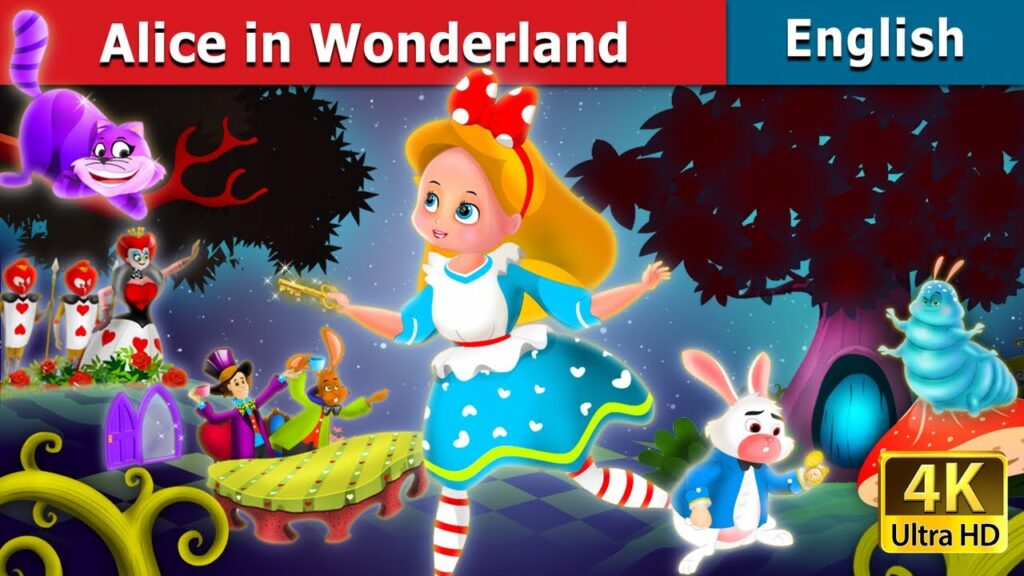Alice in Wonderland: A Classic Tale in English

Introduction
"Alice in Wonderland" is a classic tale that has been loved by readers of all ages for generations. Written by Lewis Carroll, the book was first published in 1865 and has since been adapted into numerous movies, plays, and even video games. The story follows a young girl named Alice who falls down a rabbit hole and finds herself in a strange and wondrous world. In this article, we will explore the enduring appeal of "Alice in Wonderland" and why it remains a beloved classic in English literature.
What Makes "Alice in Wonderland" a Classic?
There are several factors that contribute to the enduring popularity of "Alice in Wonderland." Firstly, the story is a timeless classic that has been enjoyed by readers of all ages for generations. The whimsical characters and imaginative setting have captured the hearts of readers around the world, making it a beloved classic.
Secondly, the book is filled with clever wordplay, puns, and riddles that have made it a favorite among scholars and linguists. The language used in the book is rich and poetic, with Carroll's use of nonsensical words and phrases adding to the surreal atmosphere of the story.
Thirdly, the story's themes of growing up, identity, and the search for meaning are universal and resonate with readers of all ages. Alice's journey through Wonderland represents the challenges and confusion of adolescence and the quest for self-discovery.
The Characters of "Alice in Wonderland"
The characters of "Alice in Wonderland" are among the most memorable in English literature. From the Cheshire Cat to the Mad Hatter, each character is unique and contributes to the surreal atmosphere of the story. Here are some of the most iconic characters from the book:
Alice
Alice is the protagonist of the story and the character through whom the reader experiences the wonders of Wonderland. She is a curious and courageous young girl who is not afraid to speak her mind.
The White Rabbit
The White Rabbit is the character who leads Alice down the rabbit hole and into Wonderland. He is always in a hurry and is often late for important engagements.
The Cheshire Cat
The Cheshire Cat is a mysterious and mischievous character who appears and disappears at will. He is known for his distinctive grin and his philosophical riddles.
The Mad Hatter
The Mad Hatter is a flamboyant character who is known for his love of tea parties and his eccentric behavior. He is often accompanied by the March Hare and the Dormouse.
The Legacy of "Alice in Wonderland"
The enduring popularity of "Alice in Wonderland" has had a profound impact on popular culture. The book has been adapted into numerous movies, plays, and even video games, and its characters have become iconic symbols of the fantastical and surreal.
In addition, the book's influence can be seen in the works of other writers and artists. For example, the surrealism of "Alice in Wonderland" has been echoed in the works of Salvador Dali, while the wordplay and puns have inspired writers like James Joyce and Samuel Beckett.
Conclusion
"Alice in Wonderland" is a classic tale that has captivated readers of all ages for generations. Its whimsical characters, clever wordplay, and universal themes have made it a beloved classic in English literature. The book's enduring popularity is a testament to its timeless appeal and its ability to capture the imagination of readers young and old.
FAQs
What inspired Lewis Carroll to write "Alice in Wonderland"?
Lewis Carroll was inspired to write "Alice in Wonderland" by a real-life girl named Alice Liddell, whom he befriended while teaching at Oxford University. Carroll often told Alice and her sisters stories, and "Alice in Wonderland" was born from one of these tales.
What is the underlying message of "Alice in Wonderland"?
The underlying message of "Alice in Wonderland" is the journey of self-discovery and the search for meaning. Alice's journey through Wonderland represents the challenges and confusion of adolescence, and her eventual awakening represents the quest for self-knowledge.
Why is "Alice in Wonderland" considered a classic?
"Alice in Wonderland" is considered a classic because of its enduring popularity and its ability to captivate readers of all ages. The book's whimsical characters, clever wordplay, and universal themes have made it a beloved classic in English literature.
What impact has "Alice in Wonderland" had on popular culture?
The enduring popularity of "Alice in Wonderland" has had a profound impact on popular culture. The book has been adapted into numerous movies, plays, and even video games, and its characters have become iconic symbols of the fantastical and surreal.
What is the legacy of "Alice in Wonderland"?
The legacy of "Alice in Wonderland" can be seen in the works of other writers and artists. The surrealism of the book has been echoed in the works of Salvador Dali, while the wordplay and puns have inspired writers like James Joyce and Samuel Beckett. The book's enduring popularity is a testament to its timeless appeal and its ability to capture the imagination of readers young and old.
Deja una respuesta